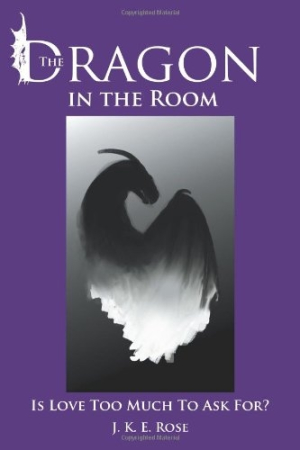The Dragon in the Room
Is Love Too Much to Ask For?
Rose takes readers on a journey through Norse mythology and a love that can lie in wait like a dragon.
Woven among runic symbols for need, strength, truth, chaos, and other results of loving are eighty pages of poems that explore J. K. E. Rose’s desires, frustrations, and ultimately unending epic journey toward a love that both brings people together and tears them apart. Use of Old Norse symbols comes from the author’s romanticized, and admittedly likely fantasized, view of her ancestry, which she explains in the introduction may or may not have included “a mother born in Ireland” hundreds of years ago who was carried off by raiding Vikings.
Many of the Northern European and Scandinavian Vikings who lived from roughly 800 to 1066 were pillagers. Many more however, were explorers. So perhaps it’s not that far a stretch for Rose, who has an affinity for the Norse and credits them with her height, blond hair, and stoic nature, to also see herself as an explorer. However, rather than land or villages, it’s emotions Rose wants to conquer—specifically, her understanding of the many forms of love. Indeed, several poems in The Dragon in the Room show her desire to find ideal romantic love: “I will not fall in love again— / not fall but soar aloft— / crowd plane and hawk and eagle from the sky, / I will climb, explode and cry.”
A mother and former television writer, Rose calls love “a dragon in the room” because of its ability to lay silent, sleeping for what feels like one hundred years, only to suddenly wake, terrify, and consume. A parent’s unending love for her child is also a recurring theme, such as this poem under the banner “Dragonyoung” expresses: “They are themselves / my need, my thirst / they were given to me first.”
The use of seemingly thematic and recurring “dragon” banners (i.e., Dragonyoung, Dragonbitter, Dragontrap) rather than specific titles for poems can be confusing. This is especially true in sections like “Dragonyoung” where what looks like three separate poems run on consecutive pages. The connection between the runic symbol and poem or poems that follow is also not always clear.
Overall, however, Rose has crafted a book that will interest those who share her affection for poetry, Norse mythology, and desire to better understand the pulls, pushes, and complexities of love. There are no ah-ha moments in The Dragon in the Room, no standout verses that have not similarly been expressed elsewhere. But there’s an honesty that can’t help but affect: “I spin away from all you know / and as I fly, terrified, I hold / true and fast and strong to this— / Breathe in breathe out / You’re wrong.”
Reviewed by
Cindy Wolfe Boyton
Disclosure: This article is not an endorsement, but a review. The publisher of this book provided free copies of the book and paid a small fee to have their book reviewed by a professional reviewer. Foreword Reviews and Clarion Reviews make no guarantee that the publisher will receive a positive review. Foreword Magazine, Inc. is disclosing this in accordance with the Federal Trade Commission’s 16 CFR, Part 255.

